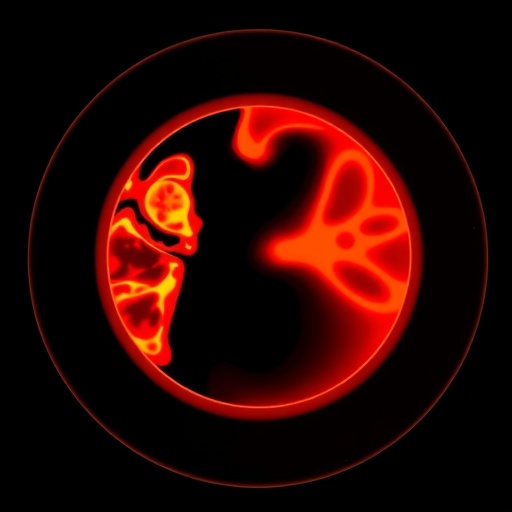In a groundbreaking advancement within the realm of pediatric imaging, a new study shines a light on the promising capabilities of photon-counting computed tomography (CT) in the chest. This innovative technology has the potential to transform how clinicians approach imaging in young patients, particularly when it comes to utilizing iodinated contrast agents. The findings, published in “Pediatric Radiology,” suggest not only a revolutionary method for reducing the required dose of these contrasting materials but also affirm the preservation of image quality, which is crucial for accurate diagnosis.
Traditionally, CT imaging in pediatric populations has posed unique challenges due to their increased sensitivity to radiation and contrast agents, which raises safety concerns. Pediatric patients typically have developing organs and tissues, making them more susceptible to the adverse effects associated with ionizing radiation and contrast agents. This is where photon-counting technology emerges as a game changer. It is designed to detect and count individual photons of X-rays, significantly enhancing the image quality while potentially allowing a reduction in radiation dose.
The study conducted by Daniels and colleagues employed a novel photon-counting CT scanning technique, which compared the standard approaches to contrast administration. The results clearly indicated that significantly lower doses of iodinated contrast media could be used, essentially mitigating many risks associated with high-volume administration. This pivotal finding could lead to improved patient outcomes and increased safety for a vulnerable population that demands careful consideration during medical evaluations.
One of the key advantages of photon-counting technology is its ability to exploit the inherent characteristics of X-ray interactions at a quantum level. By relying on the detection of individual photons instead of merely integrating signals over a wider area, this advanced imaging method can achieve higher spatial resolution and contrast enhancement. This capability is invaluable in visualizing pediatric chest pathology, which may require precise delineation and identification of abnormalities that can be overlooked with conventional imaging methods.
Moreover, the data emerging from the recent research suggest a compelling correlation between the reduced contrast dose and the maintained diagnostic quality of the images. Clinicians involved in the study noted that the enhanced photon-counting images afforded them the ability to detect subtle pathologies that could be critical in a pediatric context—such as pneumonia, tumors, or vascular anomalies—while using only a fraction of the traditional iodinated contrast required.
The implications of this study extend beyond merely improving image quality; they usher in a new standard for safety in pediatric radiological practices. As medical professionals increasingly prioritize minimizing exposure to harmful substances and radiation for their young patients, technologies that enable safe imaging protocols without compromising diagnostic efficacy are vastly more desirable.
In addition to the immediate clinical implications, the availability of photon-counting CT technology may soon influence the broader regulatory framework governing pediatric imaging. As healthcare policies evolve in response to new technologies, the reassuring data supporting reduced contrast doses could facilitate the revision of safety guidelines and protocols to better reflect these advancements.
However, the transition towards adopting this innovative technology widely will require collaboration across the medical imaging community. Training for radiologists and technologists on the nuances of photon-counting systems is essential for successful implementation. Healthcare institutions will also need to consider infrastructure updates to accommodate these advanced scanners, which may present financial implications that require careful planning and execution.
The promise of photon-counting CT for pediatric applications is not just a leap forward for imaging technology; it reflects an ongoing commitment to improving patient care and outcomes. By fostering advancements that align with the core tenets of safety and effectiveness, the medical imaging field can ensure that pediatric patients receive the highest standard of care possible.
As the research community continues to delve deeper into optimizing photon-counting technology and exploring its full capabilities, the insights gained from studies like that of Daniels and her colleagues will undoubtedly lay the groundwork for further innovations. Scholars and practitioners alike remain optimistic that such developments will foster enhanced diagnostic capabilities while simultaneously promoting a culture of safety in pediatric healthcare.
In conclusion, the introduction of photon-counting chest CT as a means for iodinated contrast dose reduction, with preserved image quality, heralds a remarkable shift within pediatric radiology. Through ongoing research, technological refinement, and a steadfast commitment to patient health, there is a bright future ahead for pediatric imaging—one where safety and quality simultaneously converge.
Subject of Research: Pediatric photon-counting chest CT and iodinated contrast dose reduction.
Article Title: Pediatric photon-counting chest CT enables iodinated contrast dose reduction with preserved image quality.
Article References:
Daniels, A., Pinkney, L., Strubel, N. et al. Pediatric photon-counting chest CT enables iodinated contrast dose reduction with preserved image quality. Pediatr Radiol (2025). https://doi.org/10.1007/s00247-025-06394-0
Image Credits: AI Generated
DOI: https://doi.org/10.1007/s00247-025-06394-0
Keywords: Photon-counting CT, pediatric imaging, iodinated contrast reduction, image quality preservation, medical technology advancements.
Tags: accurate diagnosis in pediatric radiologychallenges in pediatric CT scansenhanced imaging for young patientsgroundbreaking studies in pediatric healthinnovative technology in medical imagingnew techniques in contrast administrationpediatric CT imaging safetypediatric imaging advancementsphoton-counting computed tomography benefitspreserving image quality in pediatricsradiation dose reduction in childrenreducing iodinated contrast agents





